
The second installment in J.R.R. Tolkien's "Lord of the Rings" trilogy, "The Two Towers," takes up the challenge of doubling up on the success of Tolkien's previous novel. This is a daunting task, as fans clamored to the brilliant and wonderfully crafted masterpiece of "The Fellowship of the Ring". Though after having read and thoroughly reflected upon Tolkien's most recent work, I am pleased to say that he was able to exceed my expectations.
The novel begins directly where the last left off, with Frodo Baggins having been taken hostage by a group of vicious orcs. In spite of this setback, he is still on a quest to destroy the mystical ring, but as is to be expected in such a story, his journey is neither simple nor straight-forward.
Along the way, Frodo makes encounters with a number of new characters, ever-diversifying this creative and beautifully crafted story. Their journey stands witness to a number of conflicts, wars, and battles, with various different social groups across the realm taking part. Through it all, as Frodo inches closer to his destination, the faded shadow of Mordor- where the Dark Kingdom and Sauron await- gleams in his foresight.
I originally picked up this novel immediately after the last, and am glad to have read it. Some may not enjoy the novel quite as much, due to the fact that the language is very particular and can sometimes present readers with a bit of a learning-curve. However, the story manages to continue to enhance the rich narrative setup in the previous novel, and does a wonderful job with transitioning the story forward. Tolkien’s colorful and imaginative lore’s, histories, and descriptions truly make this novel a must read!
Reviewer’s Grade Level: 10
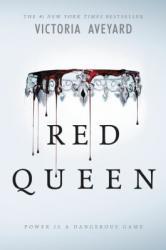
In the book Red Queen we first meet the main character, Mare. Who lives in a small town nicknamed,The Stilts with her best friend Kilorn. There is a war going on so Mare is frighten because she will drafted. Why?
Strangely because her blood is red; in this world there are two types of people Slivers (with sliver blood) and reds (with red blood). Sliver's have what is well described as supernatural powers, oh and they hate reds. So when Mare finds out that Kilorn lost his job and has to be drafted as well, she runs away to a tavern where she meets someone very interesting; who gets her a job working for the sliver king while there she discovers something very strange about herself. She catches the attention of the king and has to leave her family. What did she find out and will her life change for better or worse? Read Red Queen to find out. Grade: A+
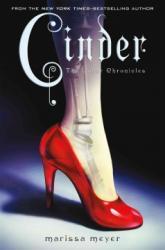
The idea of Cinder is nothing new; it is a retelling of a fairytale, Cinderella. I picked up this book expecting a rip-off of Ella Enchanted, but I got a very decent dystopian science fiction story instead. The titular Cinder character is easily the best part of this novel. She is clever, witty, and resourceful. I also enjoyed the new spins the author put on the classic fairytale. Instead of a glass slipper, Cinder wears a cybernetic metal foot.
Peony, one of Cinder’s stepsisters, goes out of her way to be kind to Cinder. The main antagonist reminded me more of the evil queen from Snow White than any Cinderella character, which was a bit of a disappointment.
Despite the fact that Cinder regularly ventures out of her home, none of the settings wowed me the way a dystopian story is supposed to. Additionally, the major plot twist is predictable from the second chapter, and by the time it is revealed, the reader has been banged over the head with so much foreshadowing that the moment loses its power.
Reviewer Grade: 9
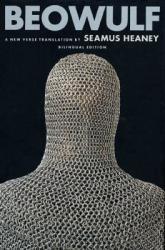
Beowulf is a classic heroic epic written one thousand years ago; I read the version that Seamus Heaney translated into modern English. This translation was excellent, managing to balance the original style and rhythm with a clear and understandable tone. Beowulf is a traditional hero. As a result, some of the plot points are fairly predictable. Nevertheless, I would recommend this epic poem to anyone who enjoys Tolkien or other fantasy series. Reading Beowulf, it is easy to see where more contemporary authors got their inspiration.
Reader Grade: 9
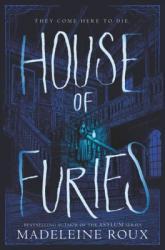
Louisa is on the run. Leaving the private boarding school she attended, and with no family to speak of, she plans to masquerade as a fortune teller in order to obtain enough money to leave Britain for America. After one fortune telling session goes awry, she finds herself at the mercy of an old crone who offers her a position as a scullery maid at a nearby mansion, Coldthistle. Louisa is excited to have employment, but after seeing strange, solid apparitions in the night, she learns that Coldthistle Manor is a house that attracts the most horrid of visitors, and that their punishment (death) is meted out by the employees of the house. She has to decide whether or not to stay and try protect new visitor and possible romantic interest Lee, or to resuscitate plan A and flee to the Americas.
I enjoyed this entertaining, gothic style horror story. Louisa, our protagonist, is fairly interesting, especially as you learn more about her upbringing and experiences with abuse at her boarding school. She doesn't lack a backbone, which is something I appreciate in a protagonist, especially in a Victorian setting. However, for this reader, Coldthistle and Mr. Morningside are the interesting parts, and as this book is the first in the series, we only scratched the surface of discovering more about them. The mythology of the peoples living in the house is revealed by short vignettes at the beginnings of some chapters, and those creature's appearances were illustrated by someone quite talented. The occasional chapter was also preceded by artwork - pictures have meaning in the book, and some chapters featured a creepy looking wall featuring random, old school looking pictures of things that were usually relevant to the next few chapters.
Some readers have complained that the pacing of the book is a bit slow at the start, but I did not find this to be the case as I was pretty instantly swept up in the mystery of Coldthistle. I will say that I didn't find the book to be especially scary, even after a few extremely gruesome murders, but it was definitely a bit creepy. The lack of scariness, for me anyway, was because despite the pictures and fabulous illustrations, I never really bought into the creepy, gothic atmosphere. The lack of chills notwithstanding, I enjoyed the characters, setting and new-to-me mythology enough to ultimately enjoy the book. I think that teens that read horror novels will find a lot to like here, and I'll be booktalking this one (in high schools, it really is quite gory) in the fall. 3 stars.
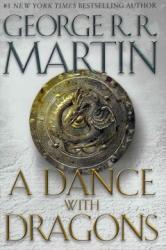
Not only has the release of George R.R. Martin's "Song of Ice and Fire" book trilogy garnered international acclaim, but it has also brought together a diverse community of fans, all of whom share an appreciation for the masterpiece they see in Martin's work. From novel to novel, Martin has continued to enthrall his fans with plots upon counter-plots, timeless lore, and brutally realistic characterization. Suffice it to say, fans were displeased when the six-year waiting period struck between the third and fourth installment. Now, with "A Dance with Dragons" well past its release, fans beg the question, "How does the fourth novel stack up to its prequel 'A Feast for Crows' and the other books?" To answer that question, I would say A Dance with Dragons has trumped the three previous novels, and exceeds the quality of Martin's previous work.
In A Feast for Crows, the plot left out the happenings of Tyrion, Jon, and Daenerys. Luckily, however, this new novel pays most of its 1000+ pages to these plotlines. With the war over, attempts for peace in King's Landing are made, but as Tyrion reaps havoc in the capitol, he flees across the Narrow Sea to meet with the rumored "Daenerys Targaryen".
She has done quite well for herself, having managed to take power, wealth, and respect form the former masters of Slaver's Bay. Though as old conflicts are settled, new ones arise, and Daenerys soon finds that governing over a foreign city is a challenge.
Up in the North, the 998th lord commander of the Night's Watch, Jon Snow, faces distrust among his brothers. Yet in spite of their squabbling, a bigger threat looms across the Wall, with the Others inching closer to the Seven Kingdoms.
In addition to these major plotlines, there are of course reappearances from a range of other characters. Their plots are befit to twists, turns, and outright bewilderment, able to surprise even some of the most observant readers.
I read this book immediately after finishing the last, and can say that I am pleasantly surprised with it. The plotlines continue to complicate, and intrigue readers ever-further in this timeless trilogy.
One complaint I would file with this novel is that due to Martin's fragmented writing style, for which certain books focus primarily on particular plotlines, I felt that some information was hard to remember or keep track of. I would definitely recommend brushing up on a summary of "A Storm of Swords" beforehand, as a way to refresh yourself on those details.
If you decide to not continue with the trilogy, my recommendation has to go to J.R.R Tolkien's "Lord of the Rings" trilogy. While it's true that the novels are highly similar, Tolkien's work makes up for some of the imperfections in Martin's.
Overall, from my opinion, A Dance with Dragons is certainly an improvement on the last installment in the trilogy, and stands to be one of the better "Song of Ice and Fire" novels. If you are this far into the series already, I would have to say that it's worth continuing. The timeless and rich storytelling found in Martin's novels makes for a read that simply cannot be passed up!
Reviewer Grade: 10
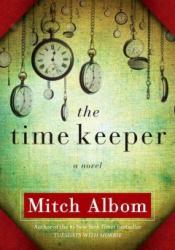
Mitch Albom is one of the most creative authors I've ever read. The Time Keeper is an amazing read, as it makes us question how we view time. Time is one of the driving forces of our everyday lives, yet we treat it as a simple, inanimate object. The Time Keeper focuses on two characters: A teenager who wants time to go faster and an old man who wants it to go slower. But there is also a third character: The Time Keeper. An old man in a cave, locked away from humanity, subject to hear all the voices of Earth pleading for time to go faster, slower, or to stop altogether. This book is very interesting, and I absolutely recommend it.
Reviewer Grade: 11
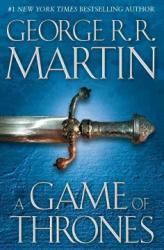
This book blew my mind. A Game of Thrones is the first book in the series A Song of Ice and Fire. These books are fantasy, and they follow the wars, events, kingdoms, and lives of the people of Westeros. This book is extremely dense, but that only means that it is full to the brink of background information and interesting tidbits about the world. The most amazing thing about this book is how developed the world is. Martin must have put an unimaginable amount of time into world-building, and this effort certainly shows. The plot is so complex, and almost all of the characters are wonderfully 3-dimensional.
Reviewer Grade: 11
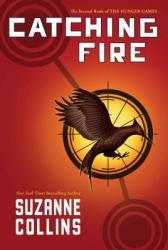
"Catching Fire" by Suzanne Collins, the sequel to her ever-popular "Hunger Games" novel, certainly bears a heavy burden of doubling-up on the success of her last installment. When I first began reading the novel, I dreaded that my interest in the story might slip away from me. However, as I continued to read, every turn of the page seemed more enjoyable than the last; and eventually, it became clear to me that Collins has done a phenomenal job with sustaining readers' attention and transitioning the story into a new narrative.
When readers left off in the last novel, Katniss and Peeta, in unison, emerged victorious as the winners of the 74th annual Hunger Games. As Katniss returns to district 12 though, she struggles with accepting the realization that her life will never be the same. Her feelings of dread culminate when she shares a conversation with President Snow, who threatens the life of her family if Katniss does not abide by his orders.
Snow, and other leaders in the Capitol, have seen Katniss' acts as rebellious, and will do whatever it takes to suppress uprisings. Namely, they devise a plan to host a special for the 75th hunger games, composed of the victors of previous rounds. This puts Katniss in a convenient position for the Capitol leaders, as she is the only female tribute to have ever won from district 12.
Katniss, Peeta, and the district 12 mentors find out about this news during their victory tour, in which Katniss is paraded over Panem and forced to keep peace amongst the districts. Helpless, Katniss and Peeta eventually come to accept the reality of their situation and prepare for the games. Under the council of Haymitch, they make allies with the other tributes, and as the story continues, their defiance manifests into a full-fledged rebellion.
I started reading this book immediately after the last and can say that I am pleasantly surprised with it. Collin's was able to meet the fans' expectations with this new novel, while also throwing in a number of unforeseen plot twists.
One complaint I might file with this novel is that the story parallels the first book in the trilogy too closely. At times while reading, the plot felt repeated, as if Collins' was reusing many of the same plot points from "The Hunger Games".
If you decide not to continue on with this next novel, I would pin my recommendation on "The Maze Runner". The story is similar to "The Hunger Games", but unique enough to engage your intrigue.
Overall, Catching Fire stands to be an excellent sequel to Collins' first book in the trilogy. While it's true that at times this book feels like a repeat of the last, I can say with near certainty that it will surprise you in ways you will not have expected. In the way that the first novel gave you a glimpse of Panem, Catching Fire truly immerses you in the story.
Grade 10
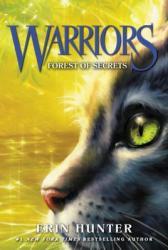
This book is amazing because I love cats and it makes cats adventurous and brave. There are big "wows" when you don't expect them - sometimes they are sad and sometimes they are happy, and sometimes they are just good. This is 3rd book in the Warriors series called The Prophecies Begin. Fireheart is the star of the story.
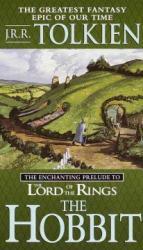
Originally written for his children, J.R.R. Tolkien's fantasy novel “The Hobbit” is hailed among book critics as a remarkable, introductory-level fantasy novel. It manages to engage readers with an epic and timeless plot, while also avoiding the use of profane language and violent scenes.
The tale is set in Middle Earth, home to a number of human-like species including the Hobbits, Dwarves, and Elves. Over the course of the novel, Tolkien provides a rich background of the history of these three species.
Namely, the majority of backstory is setup around the dwarves- who originally inhabited the “Lonely Mountain” and made their fortune off of mining gold. Their empire prospered until at last, a greedy, gold-seeking dragon named “Smog” wreaked havoc to their way of life.
Enter Bilbo Baggings, a middle-aged Hobbit settling down in the Shire. After he hosts a seemingly ordinary dinner party, his life is turned inside out, and the inner spirit of adventure is awakened with him. He joins in a quest to reclaim the dwarf home, and takes part in a number of adventures along the way.
I originally read this book after finishing the “Lord of the Rings” trilogy. While it’s true that this novel is aimed at a younger demographic, it is certainly still an engaging read for older teens and adults. J.R.R. Tolkien embeds a number of rich storytelling devices into his writing, and it makes the read an absolute pleasure!
If you decide not to try this novel, I would suggest reading “A Game of Thrones” by George R.R. Martin. It is certainly not as child-friendly, and has some pretty gruesome scenes, but Martin’s writing makes up for many of the imperfections of Tolkien’s work. Overall, The Hobbit is most aptly suited for readers aged 8-12, and serves as a great introductory novel to fantasy literature. For older readers, I might suggest a different read, but all the same, and in spite of your age demographic, The Hobbit is truly a timeless masterpiece of literature and is worth giving a try!
Reviewer Grade: 10

"A Feast for Crows", the fourth installment in George R.R. Martin's "A Song of Ice and Fire" book trilogy, takes up the challenge of transitioning the narrative from "A Storm of Swords". Readers were left off at the end of the War of the Five Kings, which had drawn havoc to all of Westeros. Throughout the course of this new story, attempts are made to unify the country, but as some relationships are mended- others are torn, and the tale of Westeros continues to grow ever more colorful with Martin's next installment.
The narrative focuses mainly on the happenings of central Westeros, with exclusions to Jon Snow and Daenerys Targaryen's plotlines (which are saved for the next novel.) Cersei Lannister's youngest son, Tommen Baratheon, now sits atop the Iron Throne, and takes guidance from his family members. Cersei and her children mourn the death of Joffrey and Tywin, whose demise is believed to be at the hands of the family Dwarf, Tyrion. However, even as Cersei attempts to make rational decisions, it becomes clear that her mind is clouded with vengeance.
In light of the fact that Martin killed off a number of main characters in his last novel, he pulls his readers into new storylines such as those with Brienne of Tarth as well as characters in Dorne and the Iron Islands. Arya Stark explores a new story arc in Bravos and all across the realm, religion emerges to have an even bigger impact on the plot. Overall, Martin does a fantastic job of bringing up new plot points and transitioning the trilogy into its next narrative.
I began reading this book immediately after the last, and while it’s true that it isn’t nearly as eventful as A Storm of Swords, the plot is equally as engaging. Players in the game of thrones continue to make political powerplays and hidden sabotages, all the while grounding their feet to climb the ladder of power.
One complaint I have with this novel is that its slow pace contrasts poorly with that of the last installment. Readers were left with suspense and eager anticipation for A Feast for Crows, and while they weren’t entirely disappointed, I felt that the beginnings of this book missed a few major fan expectations. This, in part, is due to the fact that there is a 5-year jump from A Storm of Swords to A Feast for Crows. Of course, some details are clearly left out over such a large gap.
If you decide not to continue with this series, I would recommend trying J.R.R. Tolkien’s “Lord of the Rings” trilogy, as it makes up for some of the imperfections with Martin’s work. With all that having been said though, I would certainly recommend continuing on to read this book. Its slow pace may at first deter you from reading, but, from my experience, if you stick through and finish the book, you will be glad to have done so. There are so many rich story-telling devices Martin imbeds into his writing, and paired with the fantastic plot of A Song of Ice and Fire, this book makes for a tremendous read!
Grade 10
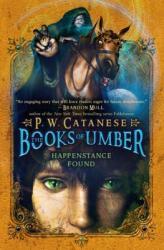
Happenstance doesn't know who he is or where he's from. When he's found in a cave by a team of explorers, he's whisked away into a world of magic and mystery, where he must come to terms with his elusive past and a strange new enemy. I couldn't put this book down. It was fun, adventurous, and surprising, with interesting characters and an engaging plot. I'd highly recommend to those who love fantasy and adventure stories.
Reviewer Grade 9
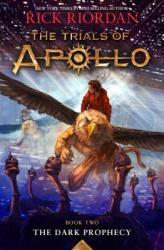
In the second book of the Trials of Apollo series, the former god (currently human) Apollo teams up with Leo Valdez and Calypso to search for a way to restore his godhood, find a missing friend, and stop an evil emperor's plot to take over the world. This sequel was every bit as good as the first book. Fun, action-packed, and surprising. I'd highly recommend to those who love the Percy Jackson books and the Heroes of Olympus series.
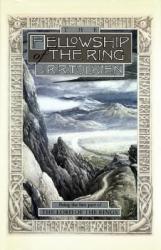
Over 60 years ago in 1954, J.R.R. Tolkien unveiled the first installment of his series “Lord of the Rings” with the publication of “The Fellowship of the Ring”. Unknown to him at the time, his series would stand to leave a legacy- one that would bring together communities’ decades after his death and revolutionize the fantasy genre forever. However, in light of the fact that the novel was published literal generations ago, I would like to try my best to analyze whether or not it stacks up today with modern-day fantasy novels.
The story takes place in “Middle-Earth”, an ancient land in which several human-like species- including the dwarves, elves, and hobbits- coincide. The story features a character introduced in a previous Middle-earth novel from Tolkien, Bilbo Baggins, who plays the same role, after 60 years following his last appearance. In celebration of the 111th birthday of Bilbo, a relative of the family, Frodo Baggins, is given an all-powerful ring- said to have been forged by Sauron the Dark Lord and infused with magical powers.
As Frodo soon finds out from Gandalf the Grey, another wizard, the ring enables Sauron to enslave and dominate all of humanity, which for obvious reasons, poses a threat to Bilbo and his entire species. Determined, he sets off on an adventure to destroy the ring, accompanied by some of his Hobbit-friends. The trip intensifies as time goes on, and as Bilbo explores the vast lands of Middle-earth, he meets a number of new traveling companions. Together, they conquest further and meet new challenges to approach.
I read the first book of this series quite some time ago, and even as a 7th grader, was able to read and comprehend most parts of the book. Though with that being said, I would not recommend this novel for someone who is similarly aged. It’s always worth remembering that the book is 60 years old, so the language is bound to be slightly more difficult to read.
There’s also the fact that Tolkien presents readers with an enormous amount of lore, and it can be a challenge to understand all the details.
When reading through this book, I found myself completely immersed in the story. Tolkien does a marvelous job with engaging readers in his story. The world he has created is described in such animated detail, that nearly anyone can get hooked on his story.
If you decide to skip this book, but are still interested in reading a similar fantasy novel, I would give George R.R. Martin’s “A Song of Ice and Fire” book trilogy a try. While it’s true that the novels in this series bear many similarities to “Lord of the Rings”, Martin’s books usually move at faster paces, with a greater number of surprises and unexpected endings.
In spite of the fact that the book may at times be difficult to get through, Tolkien illuminates his stories with rich language, backstory, and imagery; and for these reasons and more, the novel is certainly worth a try.
Grade 10
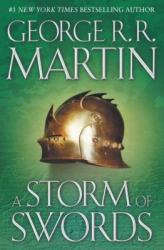
"A Storm of Swords" by George R.R. Martin, which sequels his previous novel "A Clash of Kings", takes root precisely where the last left off. Once again, Martin is challenged with sustaining book-readers attention, in an ever-complexifying story involving a plethora of different characters, motivations, and story arcs. However, after having read the novel, I can testify to the fact that Martin has done an excellent job with continuing the story.
After the "War of the Five Kings" is drawn into motion, young King Joffrey is tasked with defending an incoming attack from Stannis Baratheon. In spite of the fact that Joffrey is vastly incompetent to Stannis, who not only has a larger army but is also a distinguished battle commander, the crown stands a chance with the help of Tyrion Lannister.
Up North, Jon Snow is captured by the Wildlings- a vicious group of Northern barbarians. Meanwhile, Mance Rayder unites hundreds of Northern tribes under the prospect of defeating their common enemy; and gathers them in an attack against the wall. When Jon Snow returns, he warns the watch of their plans, but far-outnumbered, it would seem that defeat is inevitable. The attack draws nearer, and as it does, an unexpected card comes into fold- leveling the odds of the battle.
Across the Narrow Sea, Daenerys Targaryen seeks an army with which she can use to recapture her homeland. Coincidently, Ser Jorah Mormont- an outlawed Westerosi knight- is at her command, and with her, as well as the help of Barristan Semly, former King's Guard's to Daenerys' father, she manages to gather an army of Unsullied. Through a number of risky maneuvers, Daenerys also wins the affection of the common people and takes control of former slave cities.
George R.R. Martin continues developing these plotlines and more, by drawing satisfying conclusions to old story arcs and bringing new beginnings to others. All the while, he manages to keep readers at the edge of their seat, enjoying every moment of the book.
My main complaint with this novel is that while the plotlines are rich and engaging, the sheer magnitude of its length makes it a very long read. I sometimes question whether the series is worth continuing to read, as it takes an enormous amount of time to finish. However, for someone in this position, I might recommend watching the TV series- for which there is currently around 60 hours of content. It is definitely a solid alternative to the book series for someone in more of a time crunch.
If in fact you do decide to switch book series, I would recommend J.R.R Tolkien's "Lord of the Rings" book trilogy. It's similar to A Song of Ice and Fire in some ways, but makes up for certain imperfections found in Martin's work.
Overall, if you have read this far into the series, by my judgment, the trilogy is worth continuing. From "A Clash of Kings" onto this next novel, the plot lines are drawn even further and the story intensified in all the right ways.
Grade 10

There's something wrong with Neverfell's face. In Caverna, where people live underground, people's facial expressions never change, unless they want them to. But Neverfell's face is horrifying, and so her caretaker Master Grandible, cheesemaker extraordinaire, makes her wear a mask at all times. Confined to Grandible's chambers, Neverfell gloms on to all visitors, until one day she meets a special visitor, escapes Grandible's corridors and truly starts to experience the horrors of Caverna - all of which are more terrible than her face.
First, this is not a horror book. I went into it thinking that it was (I mean, look at that cover - it's creepy!), and I think that expectation hampered my enjoyment of the read a bit.
By all rights, I should have loved this book. It has the ingredients of a book I would love: a strong(ish) female heroine, intricate worldbuilding, court intrigue, unreliable characters and a few fun twists. Unfortunately, I was never able to really connect with the characters, aside from Neverfell. Neverfell, and to a lesser extent her friend Zouelle, are the only characters to really get much development, and unfortunately, Neverfell spent most of the book annoying me. The first part of the book is also short on an overarching plot - I kept wondering where we were going (aside from, potentially, outside). Neverfell spends the middle 200 pages or so making silly, avoidable mistakes and almost getting herself or her friends killed. Which makes sense, given her sheltered upbringing, but it wasn't super fun to read, and despite a strong beginning, the middle of the book seemed to drag on. However, the last 100 pages or so, once our protagonist has a larger objective, were delightful. There's a reveal in the epilogue that I didn't see coming, and I loved it.
While the book wasn't perfect, the worldbuilding was amazing, and I definitely want to read author's other book, The Lie Tree (which apparently is horror), now. A very solid middle grade read. 3 stars - I liked it.
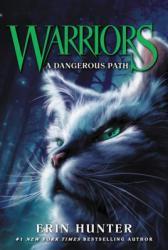
I have always been a Warriors fan, but I found that the fifth book of the Original Series really spoke to me. The protagonist, Fireheart, struggles with the knowledge about the evil leader Tigerstar, but he prevails. I would definitely recommend this book, but it is violent at parts. I probably wouldn't let anyone under the age of 10 or 11 read this, but other than that it's an amazing book full of action and adventure, following cats.
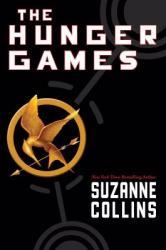
Ever since the release of Suzanne Collin's dystopian novel "The Hunger Games", her work has garnered international acclaim from some of the world's most reputable critics. Adopted into a series of wildly popular films and having been printed more than 23 million times, the staggering success of her novel begs the question, "Does The Hunger Games truly live up to its notoriety?" Well in fact, after having read it multiple times, I can personally say that it far exceeded my expectations.
After the ruin of North America and the collapse of democracy, an authoritarian government arises. In order to maintain oversight of its people, the capitol divides its dominions into twelve districts, each specializing in a different pursuit. Every year, the capitol hosts "The Hunger Games", in which a boy and girl from each district are randomly pooled into a survival competition. Participants must fight to the death in a futuristic arena, all the while being broadcasted live on TV.
Enter Katniss Everdeen, a 16-year-old teenager from the impoverish District 12. In an effort to protect her sister, she volunteers as a tribute to the game, but as she heads to the capital, she realizes that her life will never be the same. Through the course of the story, Katniss struggles to balance her conflicting emotions, and comes to understand the harsh reality of life in Panem.
As Katniss makes these revelations, the reader has the chance to pick up on a number of powerful themes, examples of which include the dangers of reality shows, the ever-growing obsession with fashion trends, and the consequences of desensitization to violence. Not only is this novel an action-packed and engaging read, but it also leads readers to share meaningful conversations about changing ideologies in the 21st century.
I picked up this read after watching the book-inspired film, and have been pleasantly surprised with it. While the movie makes fair and accurate adaptions to the story, it misses out on many of the themes presented in the books. For this reason, I would certainty recommend continuing on to read the novel after watching the movie, as there is plenty of unique content from the book. If you have not watched the movie, I would advise even stronger to pick up this read. For the reasons previously mentioned and more, I honestly am so glad to have read this book.
One complaint I might bring up is that while a large majority of book readers are young, the novel has some extremely gruesome scenes. If you are to read this book, be forewarned of violence. Furthermore, I found some passages difficult to read, due to the choppy-sentence structure used by Collins. This may just be a personal preference, but I felt that it was of detriment to the story.
Overall, "The Hunger Games" will certainty appeal to teens 13 and up and leave readers with discussion points about government, free-speech, sacrifice, moral desensitization, and other thought-provoking themes. It mixes an enthralling plot with rich and powerful messages- a formula bound for literary success.
Reviewer Grade 10
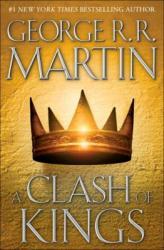
"A Clash of Kings", the second installment in George R.R. Martins "A Song of Ice and Fire" book trilogy, picks up where the first novel, "A Game of Thrones" left off. With the death of the King, Robert Baratheon, and his hand, Eddard "Ned" Stark, war rages throughout the realm, with a total of 5 lords declaring themselves for the throne. Robert's brothers, along with their allied houses, raise their banners in outlaw to the crown, while young King Joffrey defends his claim to the Iron Throne.
Meanwhile, Eddard's eldest son, Rob, rallies the North to secede from the Seven Kingdoms in declaration of their own "King in the North". This, of course, reaps certain consequences in a system built on partitions of trust and loyalty. In the midst of this turmoil, yet another lord, Balon Grejoy, who holds the Iron Islands, joins the fight, and in a distant fog from across the Narrow Sea, lies Daenerys Targaryen. She formulates an Army of Unsullied warriors and manages to acquire 3 dragons, restoring honor to her house and strengthening her claim to the throne.
With time, the war unfolds, and as it does, so do an onslaught of secrets, lies, and betrayals unforseen to even some of the most observant readers.
Martin continues to draw inspiration from English history, while also divulging from reality with the continuation of the white walker plot line.
I moved onto this book from "A Game of Thrones", and can genuinely say that I think it was a major improvement from its predecessor. Although the plot may still move a bit slow for some, now that George R.R. Martin has set the stage with background information, there is much more action than in the previous installment of the series.
One personal complaint of mine is that the sheer magnitude of characters, lore, and history presented in the book can get a bit confusing at time.
Especially for someone who is trying one of their first fantasy novels, this book may not be the best fit. On the contrary, however, if you're looking for a longer, and more austere, read, I would certainly continue onto this book from the last. The plot only gets better with time, and I think you'll be pleasantly surprised. If you decide not to keep reading A Song and Ice and Fire, though, I would recommend trying any one of J.R.R Tolkien's fantasy books. From my opinion, they are similar in style, but different enough to cater to one another's faults.
Grade 10



 Ruth Holley Library will be temporarily closed for approximately one week starting Mon., Dec. 2 to complete roof repairs.
Ruth Holley Library will be temporarily closed for approximately one week starting Mon., Dec. 2 to complete roof repairs.